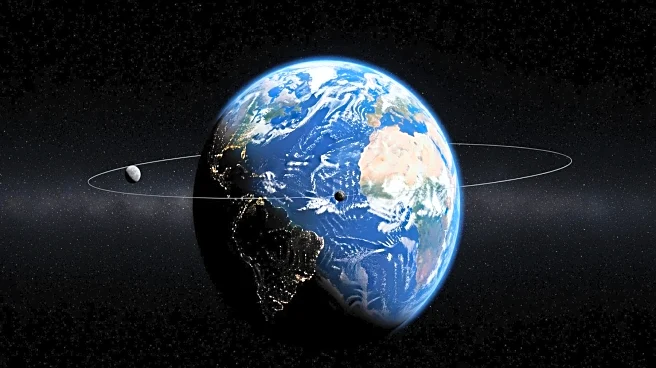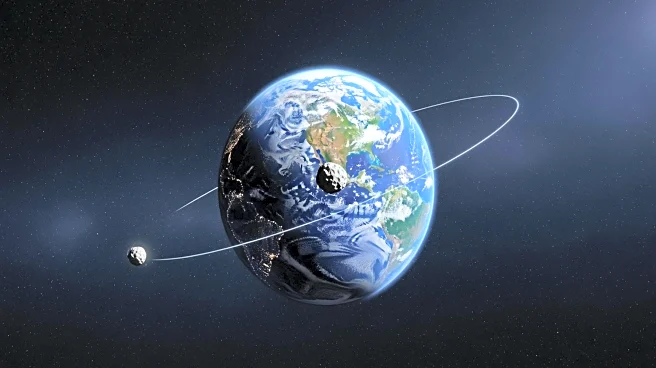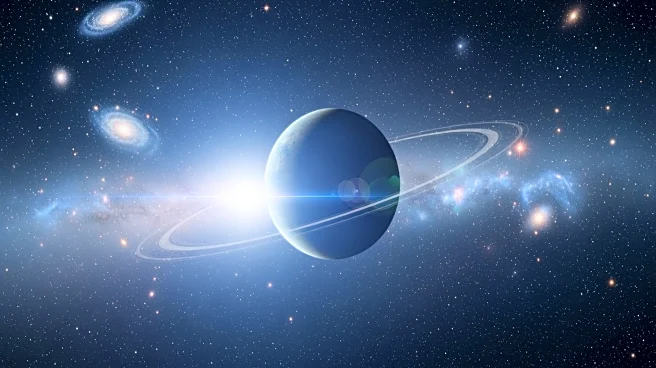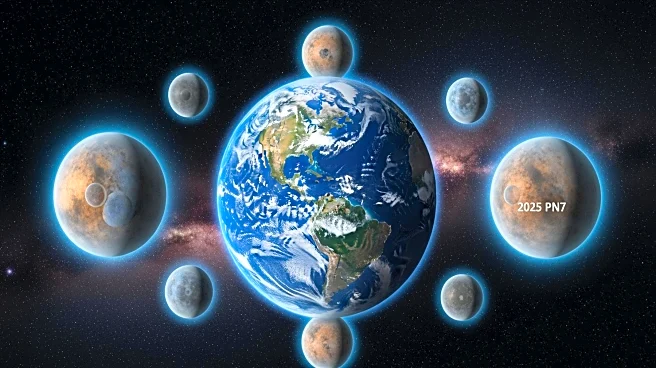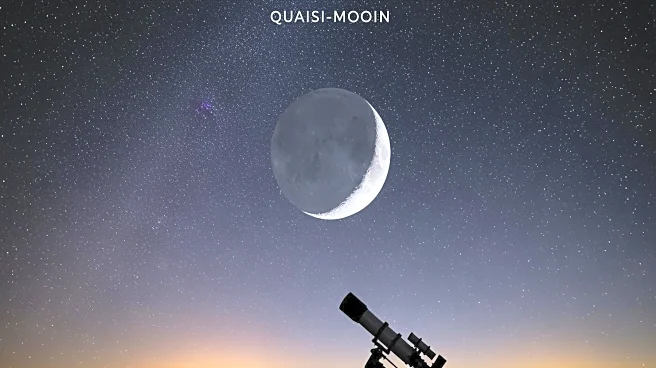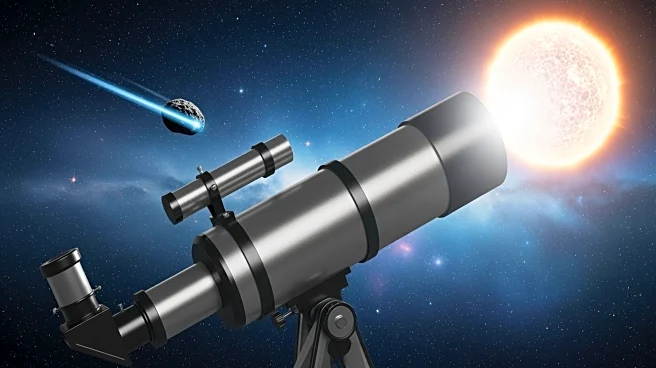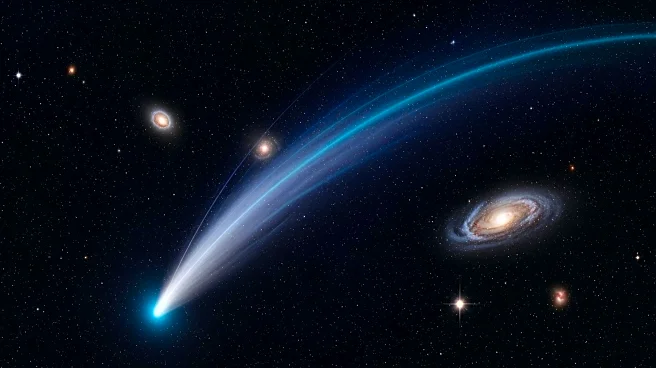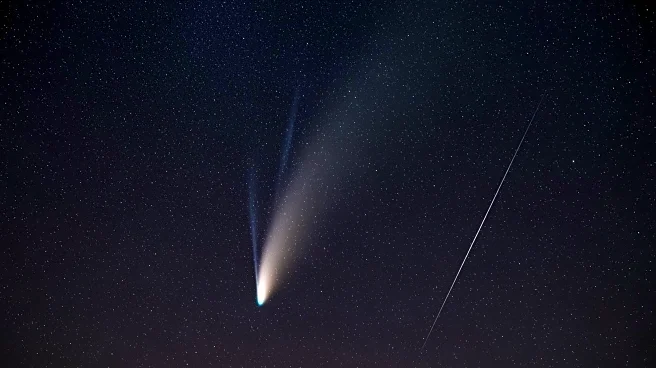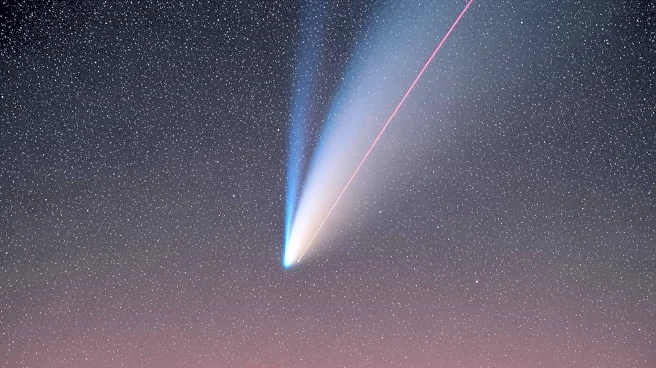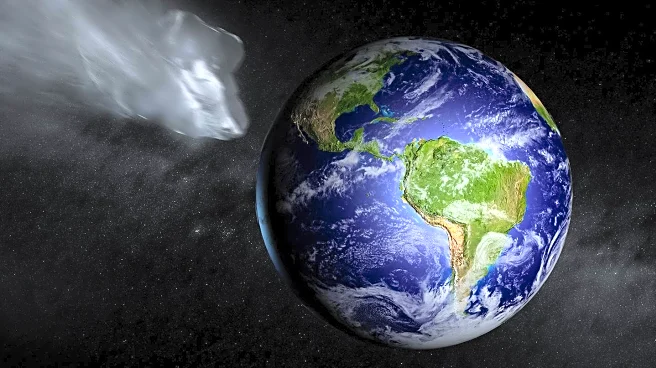What's Happening?
Astronomers have discovered a new quasi-moon, 2025 PN7, which has been orbiting the sun alongside Earth for decades. This small asteroid, first spotted by scientists at the University of Hawaii, is estimated
to be between 60 and 120 feet in diameter. Unlike traditional moons, quasi-moons are not gravitationally bound to Earth but share a similar orbital path around the sun. The discovery adds to the list of known quasi-moons, now totaling eight, and provides a unique opportunity for extended study due to its prolonged presence near Earth.
Why It's Important?
The discovery of quasi-moons like 2025 PN7 is crucial for advancing astronomical research. These objects offer rare opportunities for long-term observation, allowing scientists to study their characteristics and behavior over extended periods. Understanding quasi-moons can enhance knowledge of near-Earth objects and their potential impact on planetary exploration. Additionally, the discovery underscores the dynamic nature of the solar system and the importance of continued observation to uncover hidden celestial bodies.
What's Next?
2025 PN7 is expected to remain in its current orbit until 2083, providing ample time for further study and observation. As interest in quasi-moons grows, future missions may focus on exploring these objects to gather more data on their composition and origins. Such efforts could lead to advancements in space exploration technologies and contribute to the broader understanding of the solar system's evolution.
Beyond the Headlines
The discovery of quasi-moons challenges traditional perceptions of celestial bodies and highlights the complexity of gravitational interactions in the solar system. These objects offer insights into the formation and behavior of natural satellites, potentially revealing new aspects of planetary science. The study of quasi-moons may also have implications for understanding the dynamics of asteroid belts and their influence on planetary orbits.
